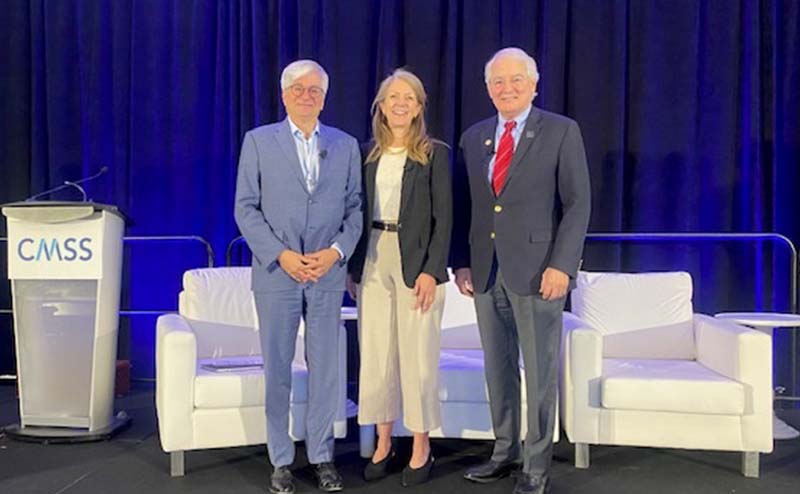ACEP was well represented at the Council of Medical Specialty Societies (CMSS) annual meeting in Washington, DC, November 8-10. Sue Sedory, MA, CAE, ACEP Executive Director, spoke on a panel, “How Collaborative Action Can Support Litigation as an Advocacy Strategy.”
Featured alongside William Thorwath, Jr., MD, FACR, chief executive officer, American College of Radiology, and moderator Paul Pomerantz, FACHE, chief executive officer, American Society of Anesthesiologists, Sedory outlined ACEPs collaborative approach to advocacy for the passage of the No Surprises Act and subsequent legal fights to ensure the law is implemented consistent with Congressional intent.
Even after the passage of the No Surprises Act, insurance companies continue to brazenly exploit regulatory loopholes to undermine physician contracts, avoid their obligations and narrow physician networks, they explained. A captive audience heard about the evolution of a joint advocacy strategy to pivot from Congress to the courts.
“Our members needed to see us stand up for them, act boldly, and take action,” said Pomerantz.
A three-pronged strategy was developed to support Texas Medical Association (TMA) lawsuits, produce evidence to support our position, and coordinate external messaging. The result thus far is a string of legal victories. But, the panelists noted, the work is far from finished.
“We are winning but insurers are still playing games. It’s like Whack-a-Mole,” said Pomerantz.
“Everyone thought the focus was on out-of-network behaviors, but regulations that put unequal weight on the Qualified Payment Amount (QPA) gave insurers leverage to drop in-network rates to levels that create access problems for patients,” said Thorwath.
Through a series of regular meetings, jointly filed amicus briefs and collaborative press statements, ACEP, ASA and ACR teamed to exert legal, regulatory and political influence.
Sedory noted that the three associations don’t see eye to eye on everything, but on these issues, everyone is faster and stronger together. “Sharing resources and collaborative decision-making helped solidify our strategy and build teamwork,” she said.
The panelists agreed that this collaborative approach could be successfully applied to other issues, such as state legislative battles on scope of practice and physician-led care.
“The model can work,” said Sedory. “We are seeing more opportunities to get involved with collective action.”
Other ACEP leaders on the CMSS agenda were Jodi Talia, chief development officer, who spoke about tearing down silos to discover revenue streams, and Pawan Goyal, MD, FAMIA, senior vice president of quality, who spoke about the digital evolution in quality measurement.
The meeting signified the start of Sedory’s tenure at the helm of CMSS. As the organization’s new president, a volunteer role she assumes concurrently with ACEP duties, she represents leaders and staff of more than 50 medical specialty societies serving approximately 800,000 physician members nationwide.
The voice of emergency physicians is being heard and ACEP leadership continues to raise the bar for physician advocacy across the country.


